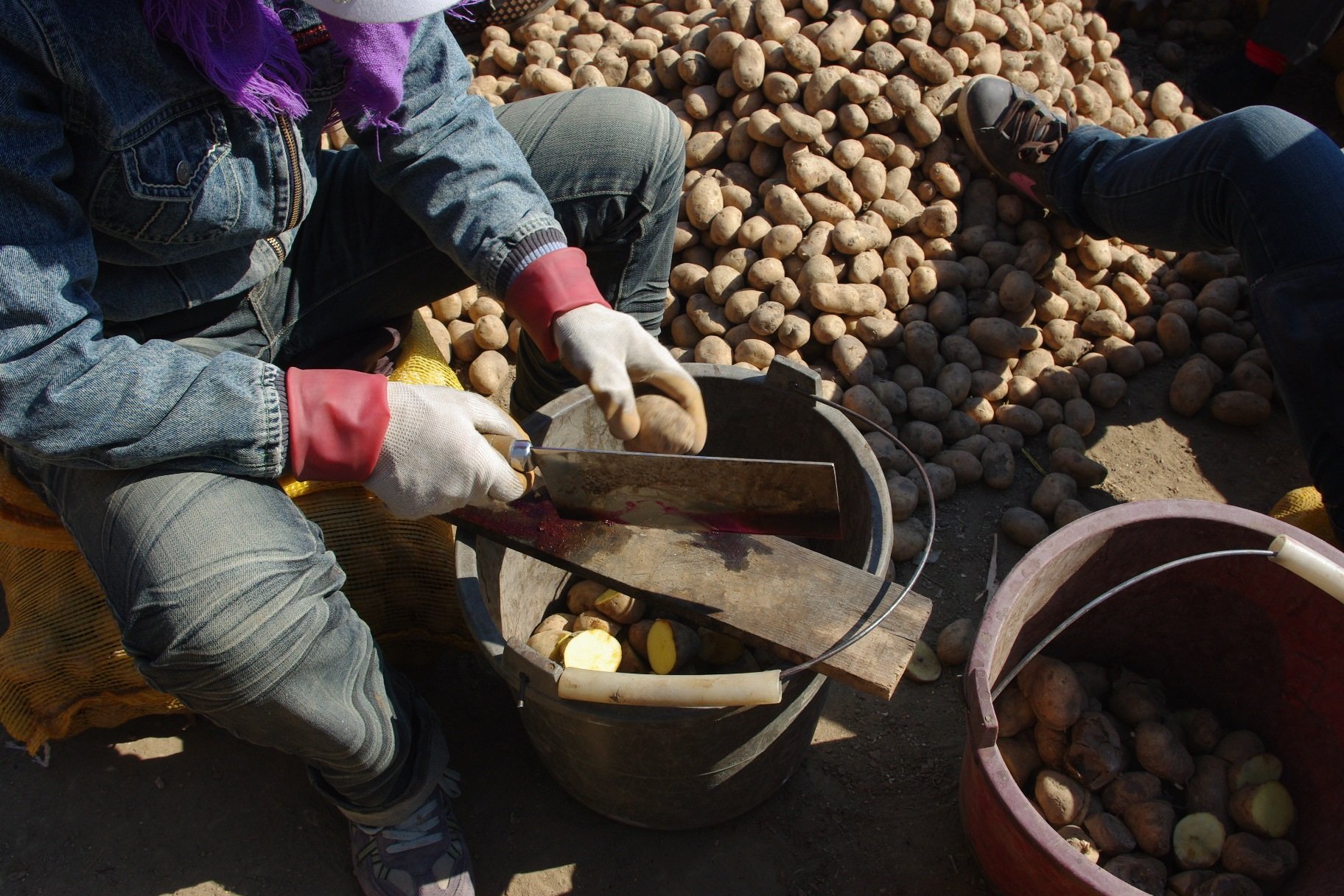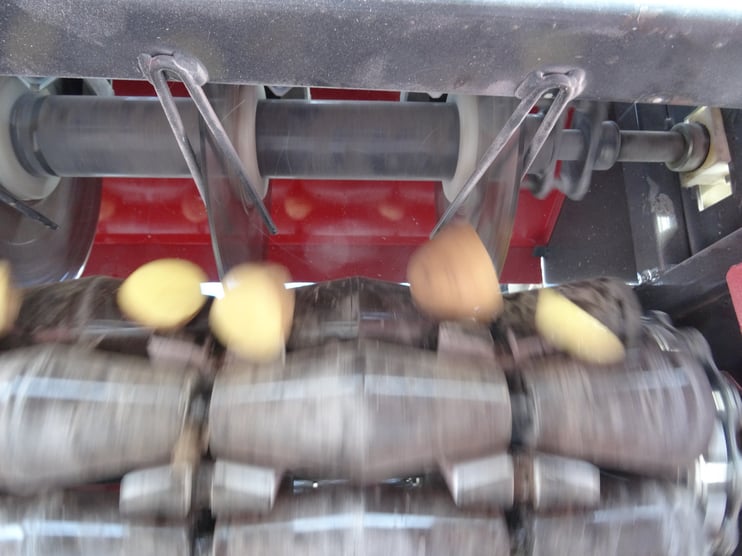
Seed potatoes, whole and cut, are often dusted or sprayed with a pencycuron containing fungicide to protect against black scurf caused by Rhizoctonia solani. The treatment also contributes to the control of silver scurf (Helminthosporium solani) and black dot caused by Colletotrichum coccodes. In the past, mercury compounds were used but this nowadays is forbidden in most countries. Cutting seed tubers is either done at the day of planting or well before (pre-cutting) to allow time for the tubers to cure (form new suberized skin). To avoid contact of moisture between tubers and they either or nor are covered by powder such as ash, lime, or talcum. A fungicide treatment is applied at planting the seed by covering the tubers or treating the planting furrow with an active ingredient.
Seed rates increase with the risk of growing the crop. Where frosts, dry spells, heat waves and excessive rain (flooding the crop and draining nutrients) occur regularly or where farming is fully mechanized with risk of technical errors, growers invest relatively much in planting material. Where crops are not much subjected to risks and where most operations are well controlled and/or done by hand, seed rates are moderate. Growing potatoes at the Highveld in South Africa in rain-fed and also irrigated crops in summer, farmers use seed rates often exceeding 4 t/ha. In West Bengal, on the other hand, where potato is grown in mild eventless winters with all operations carried out by hand, rates of hand-cut seed are frequently less than 1 t/ha. Small tubers, weighing less than 50 g, are usually not cut in technologically advanced production systems but in low tech settings such as in West Bengal they are cut. The small seed tubers are planted at narrow distances of about 10 cm within the row giving rise to an even distribution of the stems over the soil surface. In Europe, seed cutting is practiced less frequently than in North America. This has to do with the early harvest of seed crops in Europe which yields small tubers that need not be cut. The relatively adverse, rain-fed growing conditions in Europe make cut seed more prone to yield losses than in America under center pivot irrigation. The varieties employed in North America often produce fewer but larger tubers which also makes cutting advantageous there.
Pre-cutting seed potatoes
Pre-cutting seed into pieces is done up to a month or so before planting when the seed has not or is only barely sprouted and when the grower has time to carry out the job. Seed tubers are warmed to about 15 °C, cut and cured for a few weeks at that temperature and at about 90% relative humidity before being cooled down to a few degrees above zero again. Cutting makes the seed physiologically older so growers take this into account and advance the age if so desired, if not they only cut seed on the day of planting. Pre-cut seed when carried out adequately, is well healed and suffers less damage and losses than freshly cut seed at planting and often is in a more suitable physiological stage at planting. Machine cutters cut tubers in halves or quarters but also deliver slabs, slivers, small undersized pieces and even blind pieces without eyes. Growers avoid this as much as possible by adjusting the settings of the mechanical cutter. Seed pieces after cutting on average weigh between 40 and 60 g (1.5 and 2 ounces), some varieties require a somewhat larger size. When seed pieces are small, often more seed pieces are picked up and deposited in one planting hole, when large they sometimes fall out of the cup causing skipped plants in the row.

Large seed tubers are cut into pieces by hand or machine. Machine cutting, albeit less costly is less precise with more irregular sized pieces and pieces with varying number of eyes as a consequence
Want to keep reading about the potato crop and decisions at planting?
Our Potato handbook is a global potato university in 1 book!
Buy your copy today and get a one-year free subscription to PotatoWorld magazine.

